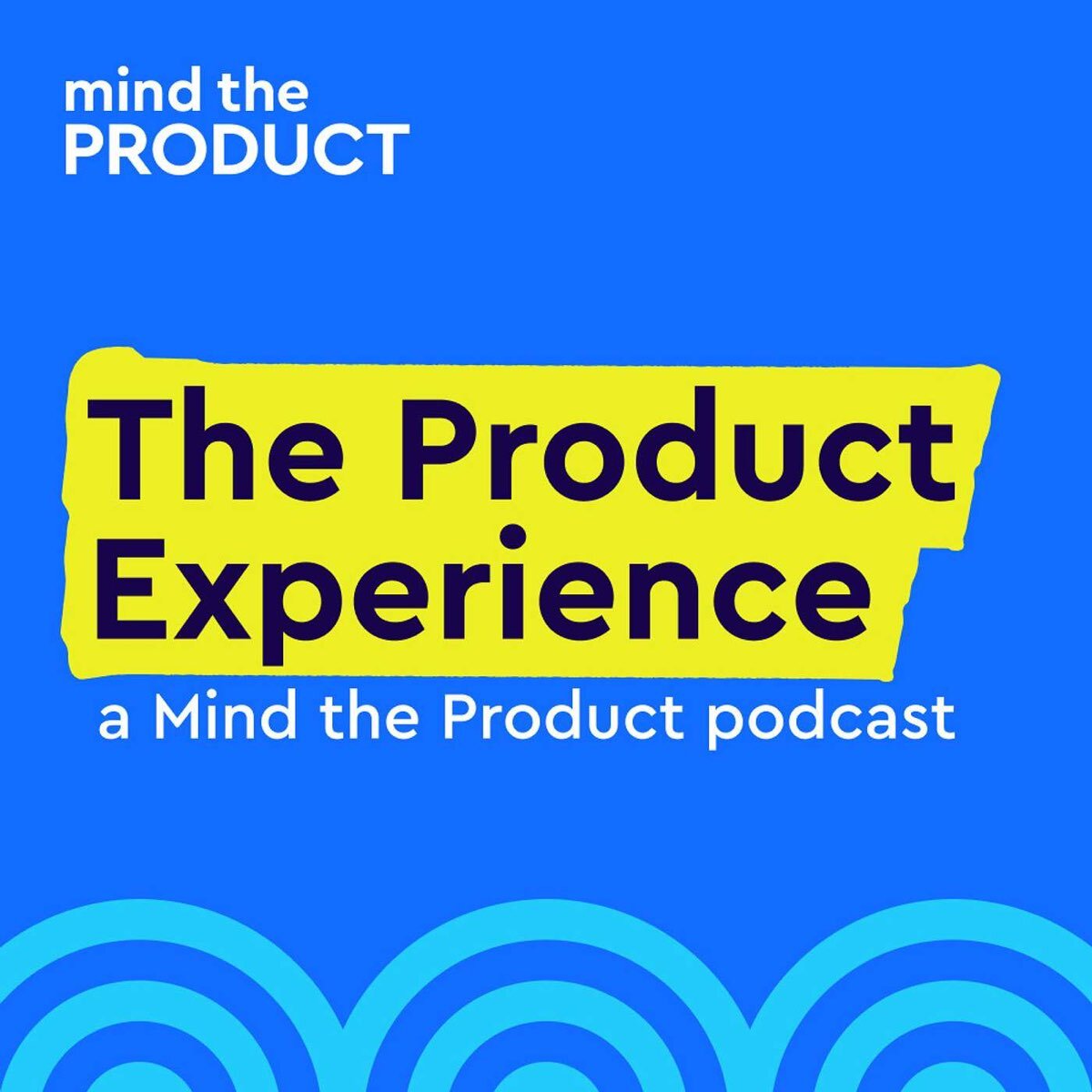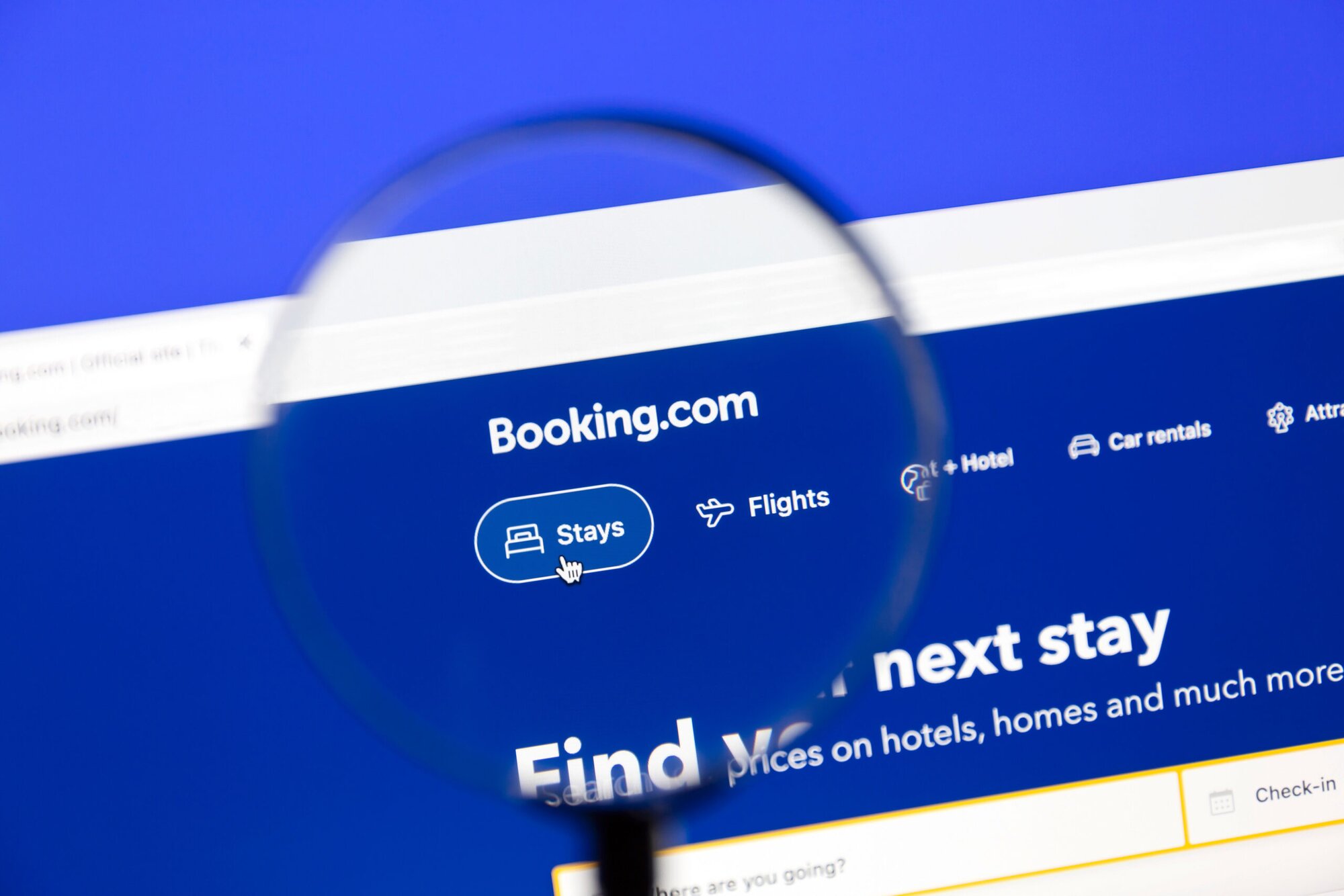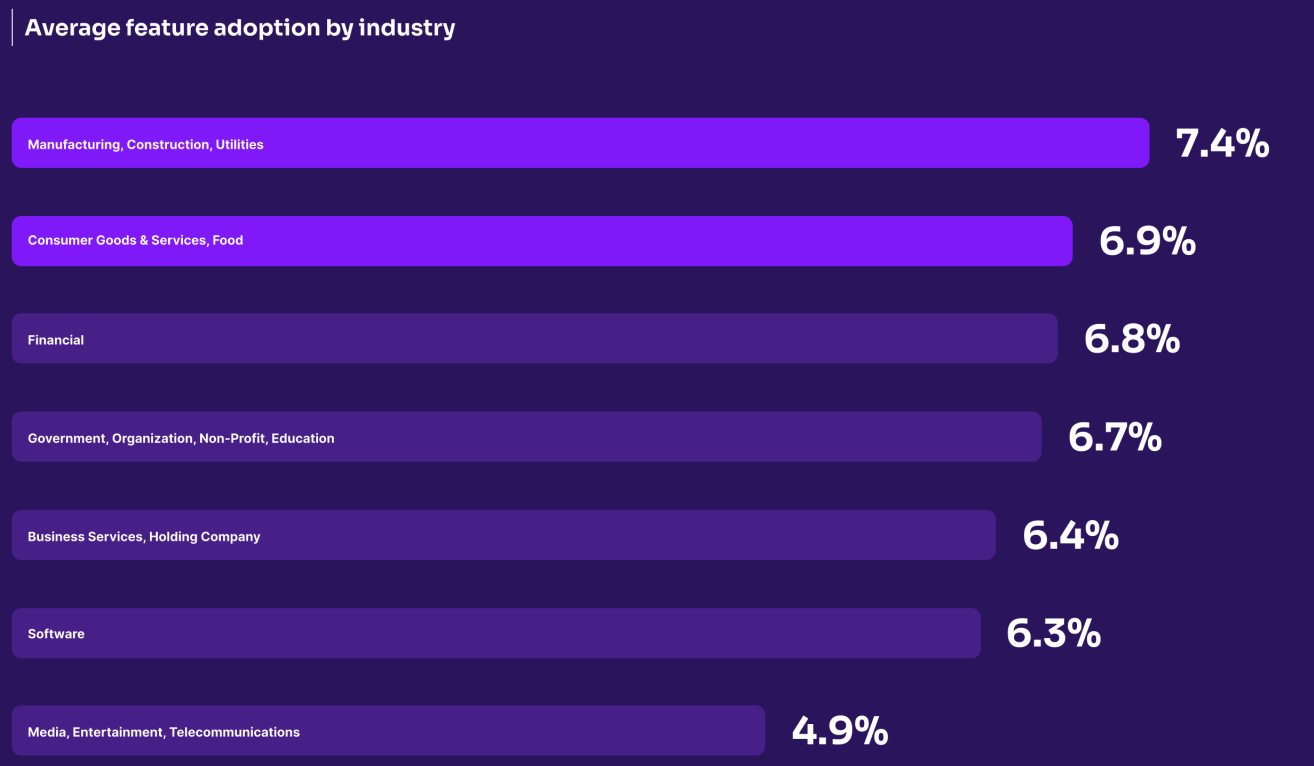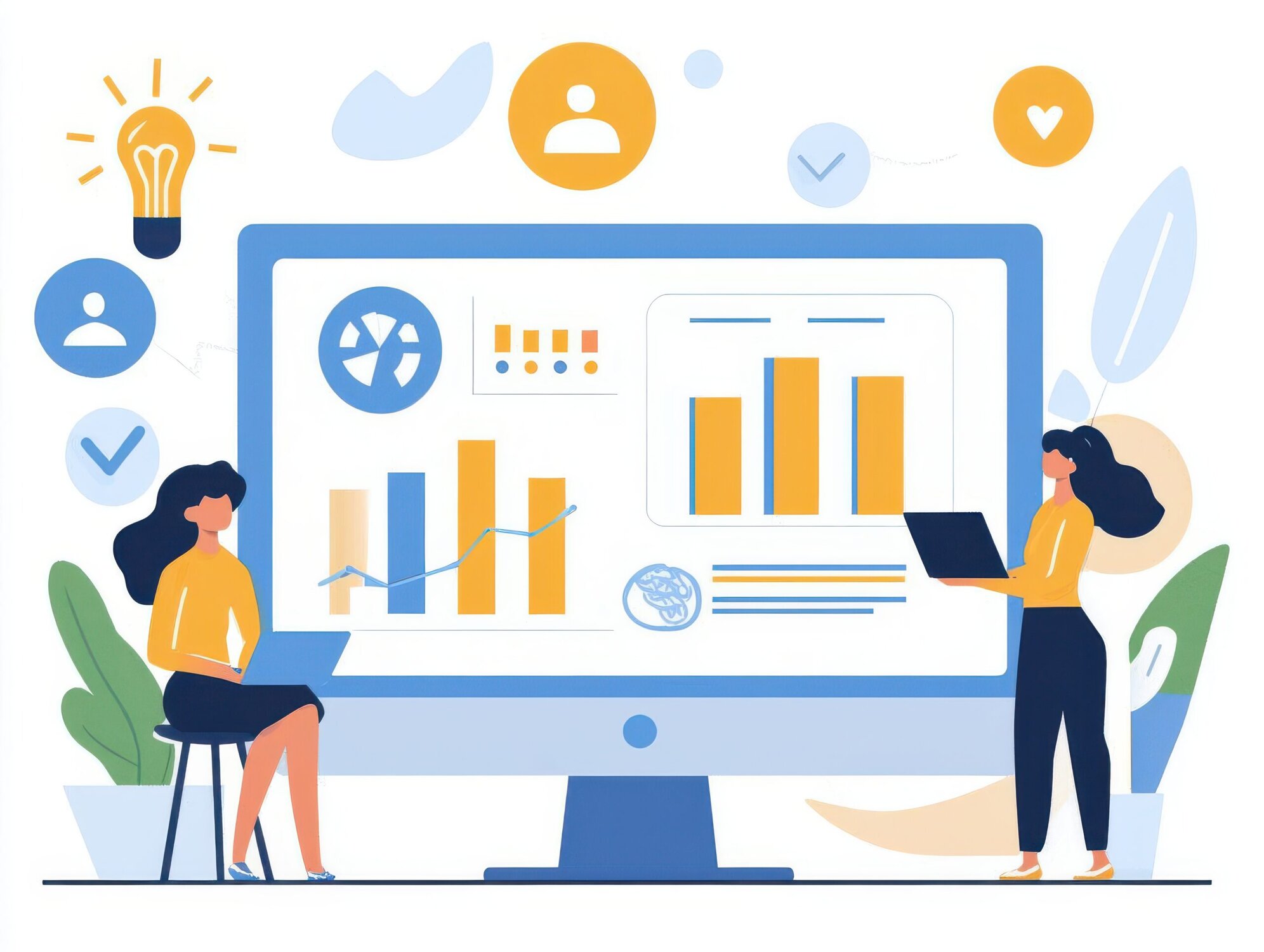What is an OODA loop and how can it be used in product management? OODA stands for observe, orient, decide, and act. In this week's podcast, Kausambi Manjita, Co-Founder and CEO of Mason joins us to talk all about this concept and how it has been a useful asset in building products and scaling SaaS companies.
Featured Links: Follow Kausambi on LinkedIn and Twitter | Mason – the content platform for eCommerce teams | The Ultimate Guide to the OODA Loop | Canva
Episode transcript
Randy Silver:
Hey Lily, let's try something different this week. Can you guess the movie that this quote came from? Here's the first one. Hi, my name is Warner Brandis my voice is my passport. Verify me. I literally have no idea what that is. Okay, it's quite obscure, but it's a great hacker movie called sneakers with Robert Redford and and a bunch of other people. Okay, let me give you a second one. You didn't have seconds, you had three weeks. The universe was created in a third of that time.
Lily Smith:
Oh, man, this sounds like really familiar. But I still just have no idea.
Randy Silver:
That was the Steve Jobs movie that came out a couple years back.
Lily Smith:
Okay, okay.
Randy Silver:
Okay, one last one. Would you like to play a game? Oh,
Lily Smith:
is that one wargames? And also, why are we doing this?
Randy Silver:
You're totally right. That is war games is just another classic hacker type movie. But I was just thinking about, you know, do you ever wonder why we have so many military terms in business and product? And you know, normally I really dislike using military terms. But today we're talking about OODA Loops. And they're just common sense. But they do have a military backstory. Yeah, you
Lily Smith:
say it's common, but this was a new one to me. So it's a good thing. We got Kosambi Mandy to come and chat with us about this. She's the co founder and CEO of Mason, and a serial product lead entrepreneur, and we can skip the rest of the movie Kreutz get right Watch out with cars. The product experience is brought to you by mind the product.
Randy Silver:
Every week, we talk to the best product people from around the globe about how we can improve our practice and build products that people
Lily Smith:
love. Because it mind the product.com to catch up on past episodes and to discover an extensive library of great content and videos.
Randy Silver:
Browse for free, or become a minor product member to unlock premium articles, unseen videos, AMA's roundtables, discount store conferences around the world training opportunities and
Lily Smith:
mining products also offers free product tank meetups in more than 200 cities. Unless probably one day you Hi, Cal savvy so nice to have you joining us on the podcast today. How are you doing super
Kausambi Manjita:
excited to be here and meet both of you in person over over video but in person.
Lily Smith:
Yeah, it would be very nice if we were there with you in India, but unfortunately. So before we get started on our topic today, it'd be great for those who haven't met you or heard of you before, if you could give our listeners a quick intro into who you are and your background as well.
Kausambi Manjita:
Super. So I'm Kosambi man Geeta, and co founder and CEO at Mason. And with Mason, we are trying to solve the problem of how do we help you know entrepreneurs, founder led businesses, ecommerce teams actually grow real fast. And, you know, you see it's getting so much easier to kind of get online and set up your online store and you know, start a business and a brand. But the problem is shifting to how do I really grow and continue to grow and become sustainable as a business and stand against big retail right. And that's that's what we're hoping to solve for. Mason is a growth operating system for E commerce teams. And it helps you grow real fast. And tell
Lily Smith:
us about you were like where did you start in your career in tech? Or maybe it wasn't in tech and how did you end up being the co founder and CEO at Mason?
Kausambi Manjita:
So I've been in E commerce tech actually pretty much from the word go. In the early part of my career I was in IBM commerce and was in Atlanta and build out a bunch of your supply chain side of like E commerce you know, solutions like your order management, procurement management, and at some point in time, I realised that it's going to be much more fun if I move on to the experience side of commerce right? How do we really make an I literally I had like 20 tabs open every day just browsing Amazon and whatnot. Like what is the next great thing that I'm gonna buy? So big big big shocker here and at some point in time I remember a friend of mine telling me you know, you're all you have so many tabs open you're always thinking about hey, I don't like the experience. Yeah, I shop better here. I love this. I don't like this. Why don't you just do that as a living right? And and so kind of moved on to the experience side of things I worked at big giants. A Walmart subsidiary called Flipkart worked in an Alibaba. subsidiary and all of that, you know, pretty much working on the same problem in some form or the other, which is the intersection, I would say, of experience and product. How do you really like shift, you know, content and design and all of that, and use all that, combine it with data, married with data, actually, and then, you know, package it into great experiences and bring it to consumers, right. So I did a bunch of data and really love that sweet spot, like data and creativity coming together. And, and yet, it sort of, you know, continued along the way, at some point, we met my co founder at Walmart Labs and realised that we both were super excited about helping a lot of people versus just below the top 1% of the retail space. And we said, hey, why not just jump out and take all that stuff that we've learned make it super simple for others to use for everybody to use? And, and you know, power power, the creator economy?
Lily Smith:
Lovely, thanks, cows. So one of the things we're going to talk about today, we're going to talk about a couple of things. We're going to talk about OODA Loops, because we had a chat about kind of your experience and, and some of the tools that you use in your day to day work at Mason and kind of in product development. And OODA Loops came up. And this is like completely new to me. I'd never heard of them. I spoke to Randy and he was like, oh, yeah, of course, that's bloody bloody blah. But I was like, Okay, I obviously need to do some reading. But we'll talk about that. And then also kind of more around sort of building and scaling, assess business. But so before we go into the building and scaling, so let's talk about the OODA Loop side. So for those that are like me, and have never heard of them, what are they and what do you use them for?
Kausambi Manjita:
Yeah, so OODA Loop is actually developed by this military strategist is John Boyd his he was a colonel in the US Air Force. And Oda stands for observe, orient, decide and act and to really simplify it right. Any pilot who's in a dogfight, he can only win by outmanoeuvring the opponent. And, and even if the opponent is like really skilled, you can be super agile and overcome Ropar. So at the core of it, what Buddha speaks about is that anytime you are in a face to face, you know, with with people on the other side, you can observe what they're doing, orient and reorient yourself, decide what to do and actually act on it and sort of keep repeating that cycle. And it really helps you outmanoeuvre be agile and, and overcome many kinds of skills that you might be lacking, right. And of course, Boyd applied it to combat operations, but, you know, military campaigns, but today, a contemporary a lot of people, you know, apply that concept in navigating complexities of business operations and upskilling and education, and even in cybersecurity and cyber warfare.
Randy Silver:
So when do you use OODA? Loops? Is it something that you know, to start with observe and orienting sounds like a really good thing, but is there a specific time when it comes because really,
Kausambi Manjita:
I'm gonna bank on my experience as a founder and speak from that perspective, founder and a product builder, and build a bunch of zero to one zero to 10 02 100 products and first startup are finally building out a new product, which already has a larger are widely adopted in companies in that space, right? Or when you're trying to carve out a niche category, right? All that really helps you solve that proverbial problem of how do I really succeed? How do I make it and when there are companies and products, which with much more firepower than you, and they have more money, more dollars, more VC funding, more people, more technology, more customers, that can really be applied, this approach can really help you focus on being super agile, and overcome the raw power that you know, folks have on the underside. Right. And before I dive into, like, how we use it, I think a great example is Canva. I think like there are classic udaap team. You know, the whole design process was really dominated by expert first operating tools, right, like your Adobe suite or and stuff like that. And if you hear anecdotes from Melanie, about the first few years, it's a great example of how I don't know whether they really call it Buddha but but how we can really apply the soul. observe, orient, decide and act, you know, loop to win in a category right? In the early days. They listened a lot to signals from larger companies, how painful it is to actually create Not just a yearbook, but even a birthday party invite that you want to just, you know, zip it out. And once they had the first MVP out, they actually released it to their customers and really closely observed the first 100,005 50,000 users and how they use Canvas, there was a lot of observation, the form really good solid hypothesis from every phase of, you know, their users journey from the activity that the users did with the early versions of Canva. And intentions of competitors in the space, right? So this was your orienting in a way. And they made super quick decisions. They iterated super fast, they shifted focus. I mean, we all know how they started with your books, and ended up with Canva today, which is a far cry from from being a yearbook company, right? And they, they repeated the cycle continuously. In fact, I think they really do that even today. And you can see that in the kind of upgrades that they're doing. They're, you know, recently powered videos and gifs moved on to now integrating publishing channels into the workflow. I mean, it's just getting more and more powerful. And I think Canva is a great example of when how will that can really help? You know, teams who don't necessarily have the raw power, but just by leveraging agility, you can really, you know, make a mark, right? I mean, who think that took it from Perth would make any dent against Adobe bacteria.
Randy Silver:
So so when you talk you introduce you to as being something used in the military, and specifically in air combat. And that's really a pilot making split second decisions and trying to orient themselves and making sure they do the right thing. But now you're talking about using it in the context of a company and teams, how do you use it with within? Is it an individual thwarted,
Kausambi Manjita:
it starts out being, you know, individual or a small team tool in the early days of any startup, especially for us. That's how it all started. When we move from our previous startup, we were doing something which was more enterprise first, and then we can completely shut that down and started working on Mason. And in the early days, we realise that this is a very product led growth motion and very, you know, Direct to Consumer Direct to consumer motion. And in the early days of how we applied it, or was actually by leading it from the founder first and the early product team first approach, which is to answer your question Randy, like a small individuals or small team, and, and how you apply it is again, observing, you know, customers or non customers who decide not to use whatever you're doing. The competitors, the landscape, in our case, it's eCommerce technology, any shift in dynamics, new policies, and from government, any decisions taken by giants like Shopify, so constant observation on all these different, you know, pillars, right, forming hypothesis around these observations, taking weekly fortnightly, monthly decisions, acting on them, and then looping back again, a reaction to your action, right? Like, what's what's really happening, because we took that decision, and we acted on it, and then putting that back into observation. So that's, that's how we started again, as I mentioned, it was very, very founder led, it was very, you know, the founding team lead. But as over the last year and a half, we've seen tremendous growth, and the team's growing bigger, the products going bigger, our customer base is growing bigger. And now it's the interesting, I would say, problem of now applying OODA in the context of team and team decisions.
Lily Smith:
I think it's really interesting. And one of the kind of questions that I had for you, before we started the interview was, you know, how does this is this the same as that build, measure learn cycle, but I understand that it's now understanding that it's very different, because it's much more kind of outward looking like build measure learn seems to be like, That's all about your product and your users. And it's quite sort of inward. Whereas the OODA Loop sounds like it's much more about the kind of the market and the landscape and other external factors of like how your product or your business fits within, fits within that and what's going on with it in the broader sense. So do you use kind of like a build, measure, learn cycle alongside the work that you do for the kind of the OODA Loop side of things? And how does that fit in for you?
Kausambi Manjita:
Yeah, it did not actually mutually exclusive, I think a large part of whatever you're doing, if you're talking about pilot and combat, it's, of course, they are kind of measuring and learning on the fly. It's not like structured data, it's a lot of different inputs that they're processing instantly. But in the early days, honestly have a new product or a startup or a new category that you're building. You know, it's very similar. It's it's a very, very similar situation because you don't have 100% transparent information in the It is right. In fact, a lot of times you don't even know where to look for those information and insights. Right. And, and what CUDA, you know, powers is essentially with fewer resources and less information. Because there's a focus on constant orientation reorientation and action, you can continue to do that, right. So there's just like, you know, definition of Buddha, which is like it, that helps you take action quickly, even if information is incomplete. And it powers you, I think, to like, immediately respond and change as new information comes, comes to you. So definitions aside, I think that's the power of water. And it really helps you, even with limited resources, limited information, you know, you can take form your hypothesis, you can act on it, and then as new information comes to start processing, and then you kind of start feeding it back into the loop, right. So it's, that's the, I would say the difference between a classic build, measure learn cycle, you know, or at a process in which you're more thinking consistently, about, you know, a lot of data you're learning from your, you know, hypothesis and how we implemented it. But OODA sort of helps you through a bit of that process out and say that, even if you don't have the right information, today, it's okay, you know, you can still take the decision, and you can fix it in the next cycle of the loop in a way. Awesome.
Randy Silver:
So, is there a difference between where you sit within the company as to which which part of the loop you're involved in, necessarily, so you know, as a co founder, CEO, you're doing a lot of observing, you're orienting, you're making decisions, but other people might be acting, and other people might be closer to the action sometimes, and seeing things but they don't necessarily have the whole picture. How do you bring it all together with with people and who does work? Yeah.
Kausambi Manjita:
So actually, this leads me to like, one of the things that I think is a little bit of a disadvantage as you grow and your team grows, is that this transmission of transparent information, like why did you decide to reorient and what is the decision that you took? And you know, because as you rightly said, different parts of the loop, different folks might actually be involved in it. So keeping everyone aligned across that OODA funnel? I would say and, and and what you've learned, while you're reorienting, this can become a bit of a bottleneck, right? But I think at the, at the core of, you know, any kind of a plg team, is this, something called, like what we call the growth mindset, I would say, and, and, and when you when you zoom out and or other, you zoom into the growth mindset, like it's such a, you know, it's such a commonly used phrase, and I always used to wonder, what really is a growth model? How do you really define it, right. And a large part of the definition, I would say, of, of a growth mindset is just orienting an acting, right? Like, you're constantly you know, iterating, and that can even be a very vague term for people. But when you break it down into saying that, hey, like, you're observing data on signals, you're like orienting, which is your hypothesis phase, and then you're taking decisions or acting, and then you're observing back the outcomes and metrics that you capture, right. So it really becomes a very structured growth mindset approach, actually. So it's much easier to, you know, break the whole process down into different folks and different teams and different people. Because you know, that, you know, what you're doing, which is generally a growth mindset, or, you know, measure and build sort of an approach, you're actually breaking it down into, there's a lot of data you're observing, you gotta decide form your hypothesis, you got to you know, take some decisions, you got to act on it. So it's, it's on one side, the transmission of information can get a little bit of, you know, difficult especially with remote to keep everybody on the same page, but actually breaking the activities down into different units gets much easier and more constructive that way, because it's, it's very clear, right? And, and at different parts of that engine, you have different tools that you use, and you implement, right and you need different skills. And it actually becomes easier to operate in a growth mindset and constantly growing plg impact funnel velocity if you actually implement like a observe, orient, decide and act sort of a team framework.
Randy Silver:
If 2022 is the year you're looking to advance your career, expand your network, get inspired, and bring the best products to market. Then join mind the product for their next conference this day
Lily Smith:
at MTP con, San Francisco plus Americas. You'll soak up invaluable insights from an epic lineup of the best in product covering a range of topics that will challenge To inspire you to step up as a product manager,
Randy Silver:
you've got the option to go fully digital for both days, or get the best of both worlds with a hybrid ticket. Digital on day one and in person at the SF jazz in San Francisco on day two, I was at the most recent edition of this event in London last year, and it was just awesome.
Lily Smith:
Get tickets now at mine, the product.com. And that leads us nicely into the second part of the topic, which is all about growing your business and how you took on that product like growth model at Mason. So presumably it was part of your OODA Loops process that led you to make a decision, I think you moved from enterprise, like you said into more of a kind of b2b SM SMB market. So what was it that you were observing? And how did you make that transition into more of an a different market and a product led growth model and
Kausambi Manjita:
be literally, you know, stitching a story together? If I say that we came across OODA loop, and then we decided it doesn't work that way. I think a lot of these decisions are, you know, in retrospect, it fits frameworks and models and models. But sometimes when you're in the middle of things, you actually are taking a lot of intuitive decisions. But I think fundamentally, at the core of it, the previous startup that we had was, again, very enterprise first, and you know, selling to buyer, buyers versus users, right. But though and of course it meant longer cycles, heavy customizations from day one, and so on. But the founding team, not just me and my co founder, but the early engineers and early product team were very product first. And I think product first usually fans listen to user first, right? So so there was this whole, very user and customer centric approach and mindset. And so the speed at which we wanted to run, we wanted to iterate by listening to our users. And our USP, our superpowers were all product product experience, product funnels. So it was a very, it was a, I think, a more fundamental realisation that as a team, we can operate so much better if we are plg first team versus a sales first team from day one, right? Sales, it's not something you can exclude from plg, all marketing, like they are all eventually all of those, all different functions have to come together for a company to succeed. But it's about what is your USP and how you can really utilise it from now on in the initial days to really amp up your growth. Right. And, and so it was more that at that it is more founder go to market fit, I would say. And we were very excited about of course, helping a lot of folks versus helping you know, the top 1% company. So there was all of that fundamental, I would say philosophy that came in, and it the transition was well, it's a new company. So for for both of us, it was of course a very, you no clear choice. And for the folks who continued along with us. It was a natural process. It was just something we we do better. It showed an outgrowth over last year, we were like 20x month on month, and it was really incredible. But setting up the rest of the team. Yes, it took a little bit of re understanding what skills to hire for. And that's where I think retrospectively when we started speaking muda and all of that, I think some of our skill set and how we hire across the different observe orient decision act, sort of, you know, skill sets that you need, at that it helped take some of those decisions better. Of course, we made a bunch of mistakes, like we could have done some of the things earlier, better later, all of that, but primarily, it was about trying to understand what are the skill sets that are needed for a plg team to really succeed? And, and really focus on funnel velocity from day one. And I think that probably helped a bit more around there, but definitely not. I'd be lying if I say it was the decision to
Randy Silver:
what kinds of things did you have to do with the team to make that kind of pivot to what kind of how did you bring them along?
Kausambi Manjita:
I think a lot of it was, again, when you are in are in a previous startup, we were much smaller team. And I think the early team that works along with you, it's it's a lot of one on one philosophy people, you know, vision and all of that, that have to sort of align together. Right. And I think it's hard to put that into a framework. At least I haven't been able to do that as yet. But it's a lot about like a bunch of the early engineers that we still work with are still with us are folks that we work with and more than matar in Alibaba. So these are people that you've worked with, you've probably gone through this stuff together and you know, fundamentally that you align on the vision and the space, you know that, hey, we want to power, you know, the next 1 billion, you know, makers to actually become sustainable businesses and become independent and create business. Right. So I think fundamentally that that alignment was there, it starts from there, like, are you all excited by the same vision, like where you see yourself making an impact? And the second part of it was, of course, the approach to go to market, I think that really it's an under, under discussed thing when it comes to, you know, anybody talking about startups or product building is like, how do you really utilise your team's core skills to not just build the product, but take the product to market? And I think there was a lot of alignment there. We were very excited by focusing on users from day one, we love speaking to our customers, even if they are non customers, hearing from them constantly being very close to them. So I think, the early team who continue to be with us, honestly, Randy, it was like, yeah, there's like, no question. We both are like, we are all aligned on the vision, we love the space. And we know that the way we want to iterate on it, and we want to work on it, that will motion like we are aligned on that. Now, the rest of the team, of course, I think is a more of, again, faster cycles, but understanding what motivates a person versus not there, for example, you know, early on a bunch of folks is to tell us hire people PLD, of course, like hire people with growth mindset. And I was really humbling, you know, interviewing 2200 odd people, and you're thinking, how do you really measure growth? And I think they're probably thinking a bit more structure, as you know, yeah, you got a, you know, a lot of growth is about orienting and acting, and not just, you know, hypothesising. And, you know, like, thinking about what to do. So, you know, folks who are when they talk about what they do, or what they want to do when they are more, you know, when they're pulling out snippets and anecdotes and how they utilised data, how they, you know, utilise customer signals to orient act, it sort of was a bit softer process there. But I think like, right now, it's, it's very interesting, because I'm constantly speaking with and people are like, okay, so it's getting to that phase, they're like, Oh, she really loves jobs.
Lily Smith:
So I think it's really interesting, what you're saying around, you know, when you're starting a business, like, I think a lot of people's perceptions of startups is that you start with an idea for a product, but actually starting with a market and a vision and a mission and like a problem that you want to solve or like a market that you want to help, I think in a way that can be better, because then you do more research to really find out like, How can I help this market? Like what problems are there to solve, rather than going in with a, you know, a kind of preconceived idea of how you're going to solve those problems. So I love that I love that kind of honest appraisal of like, oh, you know, just that approach that you've taken, I think it's really interesting.
Kausambi Manjita:
It's, it's actually, the first version of any product that you're imagining is always the low hanging fruits, and will change your assumptions, you will get more signals and data and information and the market will change and you will realign and you will, you will shift. So it's now I realised that it's presumptuous to think that like, you know, this is my product idea, and this is gonna stick. It's if you know, the pain points, if you know the market, if you know the opportunity and the fundamental trends. And you know that you've got a great team with you, you'll you'll iterate and you'll figure out the product along the way.
Lily Smith:
Yeah, absolutely. And so, just you mentioned earlier, you know, you made some mistakes along the way. And, well, you know, you don't always want to focus on the negative, it's always really good to reflect on those and kind of understand like, what lessons you learned because that's, I think, you know, when you when you make mistakes, that's where you do all of your learning. So tell us about some of those lessons that you did learn along the way.
Kausambi Manjita:
I think the fundamental lesson is about you know, when when you think about taking a product, building a product rather than taking a product to market is is not often spoken in as much obsession as about building like people are just like maker you know, the whole maker philosophy is so exciting building thing During these are so exciting, but actually taking it out there and, you know, seeing how your plan, you know, translates into actually people interacting with it, I think there was the saying, right, like no plan survives contact. And and it's very similar to that. And I think this is the biggest lesson is that a lot of times you probably don't even have to have and we speak about it with no code, etc. Now it's getting so much more widely accepted that you have like very, very minimum, minimal versions of your products and minimal lovable versions of your product, and you take it out to customers, and you will, you know, work with them and stuff like that. But it's underrated, how important it is from day one, to actually have your signals back looping in really, really fast. And I think that it might translate into building a marketing team well in advance, then then you might even imagine, right? Yeah, I don't even have like a great product. Like, why do I even need to think of marketing? But you know, what it from the early days? You know, evangelising, what you're, what the pain points are evangelising the space and, and the problems that you want to solve for the because it helps you gain more people who sort of will come to you and say, Hey, like, you know, I'm facing that problem. But I think what you're doing is probably not how I think about solving it, I need it this way, right? So so it really helps to be out there from day one gathering being very close to customers, people who work with the customers, your you know, partners of your customers, etc, to actually get the signals back in from day one, right? For us, it manifested in like we didn't really set up we are, as I said, so heavy into product really didn't bother about setting up like a marketing and content engine early on. And now I'm like, we could have done it six months before, I guess. So I think that's customer marketing. Like we didn't even really think about that. And so we didn't really think of how do you really, you know, leverage content and, you know, evangelism, and all of that in the funnel, too, right, in your Product Funnel too. So So I think tactically, that's like one really big lesson for me is how do you really from day one, really have a strong process of listening to signals by actively proactively taking it out to market and, and speaking to your customers, even if it's wrong, right? The second big lesson is, I think, overall for life is leverage the best skill sets that you have early on, because in the early days of building a product owner and accompany you have so many new things that you have to learn. You don't want to learn like additional 10 new things, right? So in our previous startup, like sales was not something we've ever done with all product teams engineering. But we decided, hey, like enterprise sales are bringing on we'll figure it out along the way. But because I've literally, you know, it was it was a lot of new things to learn. So sometimes it's super important to understand what you are great at. And don't be shy to actually leverage that. In the early days, you can always pick more and better skills, you will for sure. But it's totally fine to also step back and say these are my these are things that I'm really great at. And can I use that to my advantage? In the early days, right. And I'll figure the other skills out along the way. I think, for me as a as an individual, this is something that I like even to my mentees, I keep telling them that this is a superpower, don't don't be afraid of it. Like don't be shy about it. Just use that for now. And the third would be I think the growth mindset, I don't know how to really translate that into actionable, you know, a framework to even apply in hiring or speaking to anybody that we you know, are looking at joining our team. But yeah, now, of course, you know, translating OODA and sort of morphing it into how can we leverage, like the different parts of the OODA engine to actually really make the whole growth mindset really tangible as a framework. I think that that's the third thing. Okay, so
Randy Silver:
tying it all together. You talked about how you pivoted from from enterprise sales to consumer and using OODA for it. So but you're looking for totally different signals. When you're doing that, you know, enterprise sales, you're relying on the sales team, you're as he's gone loops, lots of other things with it. What specific things did you decide what kind of testing what kinds of signals do you look for? To say, you know, yeah, and there's signals potentially in the product in the funnel itself, but potentially there's upstream signals just in how are people responding to the marketing changes in the first place? Yeah,
Kausambi Manjita:
yeah, totally. And There are so many frameworks to actually, you know, that are out there, it is several different frameworks that you can utilise to like, you know, decide on what kind of tests you need to run, prioritise all of that, then fundamentally, they have two components in common. One is the data. And when I say data, I also mean qualitative data. And people really don't use that enough. I have customers give you a lot of signals in in your app, or even in your, you know, marketing or top of the funnel. But sometimes, there are like this crazy horse that you are on. And I think there was this very, very funny story that I read once, like, this guy is on a horse, and the horse is like really running really fast. And people are asking him, Where are you headed? Like, you're going so fast, but he said, I don't know the horses leading me somewhere. So I keep thinking about data being that horse with it. Because if you don't have an anchor on actually the real insights from people who are telling you, like, it's so easy to watch a hot jar video and just say that, Oh, you didn't click on it, because he didn't like it. But actually, when you speak to people, it might just be that there was a doorbell. And I just, or my baby was crying, right? Because this is literally dealing with that, right? So I think, if you can't anchor your qualitative data with quantitative data, then you can really go wrong. And your whole hypothesis and fillers that are built out can totally break. Right. So I think there are back but speaking to customers constantly pulling them into conversation loops over time to actually understand and anchor your data in reality, I think that's like one super important decision making criteria. The second is quantifying the impact on on the funnel or part of the funnel, right? Like it a lot of times. And I think for us, it's a lot of young Gen z's in our team so constantly is sort of trying to help them with quantifying the impact of it's, a lot of times it's more about, hey, I think I've read somewhere that this will have 30% impact rarely, but actually, can you dig deeper down and say that it this is a fashion brand and needs X in the app app, but they actually encounter why and when I introduced this feature, it will be impacting 20% of our total customers who are in the segment. And so you know, this will translate into abysmal instals and blah, blah outcome, right? So actually, again, you know, taking that observe observing the data to actually pull out the cohort or the specificity and then trying to quantify it accordingly. I think these are like two fundamental components you have to use in any decision making framework to prioritise your
Lily Smith:
test Kosambi it's been so great talking to you today. We have run out of time. I was gonna say Kosambi boy so it's but yeah, it's been fantastic. Thank you so much for coming onto the pod and talking to Yeah, it was super
Kausambi Manjita:
fun and thank you for having me.
Lily Smith:
The product experience is the first and the best podcast from mine the product. Our hosts are me, Lily Smith,
Randy Silver:
and me Randy silver.
Lily Smith:
Louron. Pratt is our producer and Luke Smith is our editor.
Randy Silver:
Our theme music is from humbard baseband power. That's P AU. Thanks to Arnie killer who curates both product tank and MTP engage in Hamburg, and who also plays bass in the band for letting us use their music. You can connect with your local product community via product tank, regular free meetups in over 200 cities worldwide.
Lily Smith:
If there's not one near you, maybe you should think about starting one. To find out more go to mind the product.com forward slash product tank







